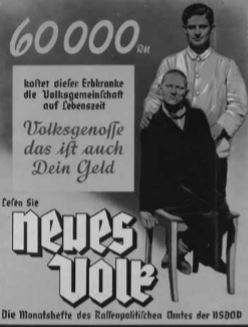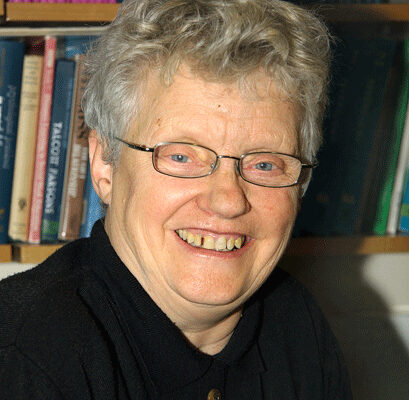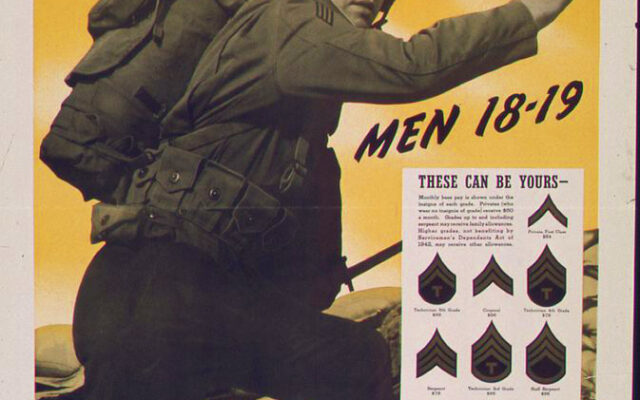The eugenics movement, with its theory of eliminating the “unfit” through selective breeding to improve a “race”, provided the philosophical basis for Adolf Hitler’s ideas. Many western governments passed eugenics-influenced laws advocating compulsory sterilisation and regulating marriage in the early 20th century. German eugenics was underpinned by a belief in “improvement through exclusion”, which saw certain marginalised people as detrimental to the nation’s health. The way to deal with such people was set out in 1920 tract Allowing the Destruction of Life Unworthy of Living by psychiatrist Alfred Hoche and jurist Karl Binding. They employed both emotional and economic arguments for the elimination of several groups, including “incurable idiots”. The text was well received among the race hygienists of interwar Germany. When Hitler became chancellor of Germany in 1933, he was determined to turn the country into what he called a “community of the people”. In this so-called community, there would be no room for those seen as weakening the nation. He was quick to pass laws for the compulsory sterilisation of those deemed to be carrying “hereditary disabilities”, whether physical, mental or intellectual. Under the Law for the Prevention of Offspring with Hereditary Diseases 1933, around 500,000 people were forcibly sterilised. Those designated “feeble-minded” were by far the main victims of this law, making up 52.9% of all those sterilised in 1934. But Hitler’s real goal was to exterminate rather than regulate those he deemed “unfit”.
Murder made formal
In 1939, the parents of Gerhard Kretschmer, an “idiot” born with severe physical disabilities, asked Hitler for permission to kill their son. The process and personnel involved in Gerhard’s death informed what became known  as Aktion T4, named after the “euthanasia” programme’s headquarters at 4 Tiergartenstrasse in Berlin. Under T4, Hitler authorised SS men Dr Karl Brandt and Philipp Bouhler to grant certain physicians the power to give the “incurable” a “mercy death”. A vast bureaucratic structure of euphemistically named front organisations was created to assist in identifying, diagnosing, transporting and destroying hundreds of thousands of disabled adults and children, then cover up their murders via a system of form letters and forged death certificates. The process began with amassing a vast amount of information on all the disabled citizens, from newborns to adults in institutions. This information was then used to decide who was “unworthy of life”. Disabled children were the first to be killed under T4. If selected for death, they were transported to a killing ward and given a lethal injection or starved to death, unless they met their end in a medical experiment. Their bodies were ransacked and organs sold to the highest bidder; some physicians amassed vast collections of organs from murdered children, which they used in research over the 20th century. Between 5,000 and 25,000 children died under T4. The systematic murder of disabled adults came next. At least 100,000 were killed in gas chambers at Grafeneck, Brandenburg, Sonnenstein, Bernburg and Hademar in Germany and Hartheim in Austria. Hitler officially stopped Aktion T4 in the summer of 1941. Despite secrecy and subterfuge, there had been protests from parents and church leaders, and concern over the effect of T4 on the nation’s morale. However, this stopped only the systematic murder of disabled people. The programme continued unofficially as “wild euthanasia”, with victims shot or starved, often away from the Nazi heartlands. Entire asylum populations were wiped out in Poland and the occupied Soviet Union. It is estimated that, in all, around 300,000 disabled people were killed under the Nazi regime.
as Aktion T4, named after the “euthanasia” programme’s headquarters at 4 Tiergartenstrasse in Berlin. Under T4, Hitler authorised SS men Dr Karl Brandt and Philipp Bouhler to grant certain physicians the power to give the “incurable” a “mercy death”. A vast bureaucratic structure of euphemistically named front organisations was created to assist in identifying, diagnosing, transporting and destroying hundreds of thousands of disabled adults and children, then cover up their murders via a system of form letters and forged death certificates. The process began with amassing a vast amount of information on all the disabled citizens, from newborns to adults in institutions. This information was then used to decide who was “unworthy of life”. Disabled children were the first to be killed under T4. If selected for death, they were transported to a killing ward and given a lethal injection or starved to death, unless they met their end in a medical experiment. Their bodies were ransacked and organs sold to the highest bidder; some physicians amassed vast collections of organs from murdered children, which they used in research over the 20th century. Between 5,000 and 25,000 children died under T4. The systematic murder of disabled adults came next. At least 100,000 were killed in gas chambers at Grafeneck, Brandenburg, Sonnenstein, Bernburg and Hademar in Germany and Hartheim in Austria. Hitler officially stopped Aktion T4 in the summer of 1941. Despite secrecy and subterfuge, there had been protests from parents and church leaders, and concern over the effect of T4 on the nation’s morale. However, this stopped only the systematic murder of disabled people. The programme continued unofficially as “wild euthanasia”, with victims shot or starved, often away from the Nazi heartlands. Entire asylum populations were wiped out in Poland and the occupied Soviet Union. It is estimated that, in all, around 300,000 disabled people were killed under the Nazi regime.
Paving the way for the Holocaust Aktion T4 laid the groundwork for the Holocaust. Under T4, the methods for efficiently killing hundreds of humans at a time were trialled and honed. Crowd control via deception, processing bodies for organs and valuables and killing by gas chamber were all perfected in T4. Key personnel who worked in the killing centres brought this knowledge with them when they were moved to run death camps. Hundreds of physicians, nurses, civil servants and other professionals allowed T4 to function – yet very few were held responsible for their crimes. The majority of T4 physicians, whose authority acted to soothe popular concerns over the legitimacy of their murderous work, returned to their posts after the war, unrepentant, while the medical profession closed ranks around them. Many nurses walked free because they claimed they were merely following orders. Meanwhile, survivors of sterilisation and the killing wards have largely been denied compensation, and a memorial to the victims of T4 was erected only in 2014.
Further reading
T4 memorial website. www.t4-denkmal.de/Atherton H, Schwanninger F (2019) Finding Ivy: a life worthy of life. Community Living 33(1):18-19 Binding K, Hoche A (tr Modak C) (2012) Allowing the Destruction of Life Unworthy of Life. Greenwood, Wisconsin: Suzeteo Enterprises Evans SE (2004) Forgotten crimes: the Holocaust and People with Disabilities. Chicago: Ivan R Dee Gellately R, Stoltzfus N, eds (2001) Social outsiders in Nazi Germany. Princeton: Princeton University Press





